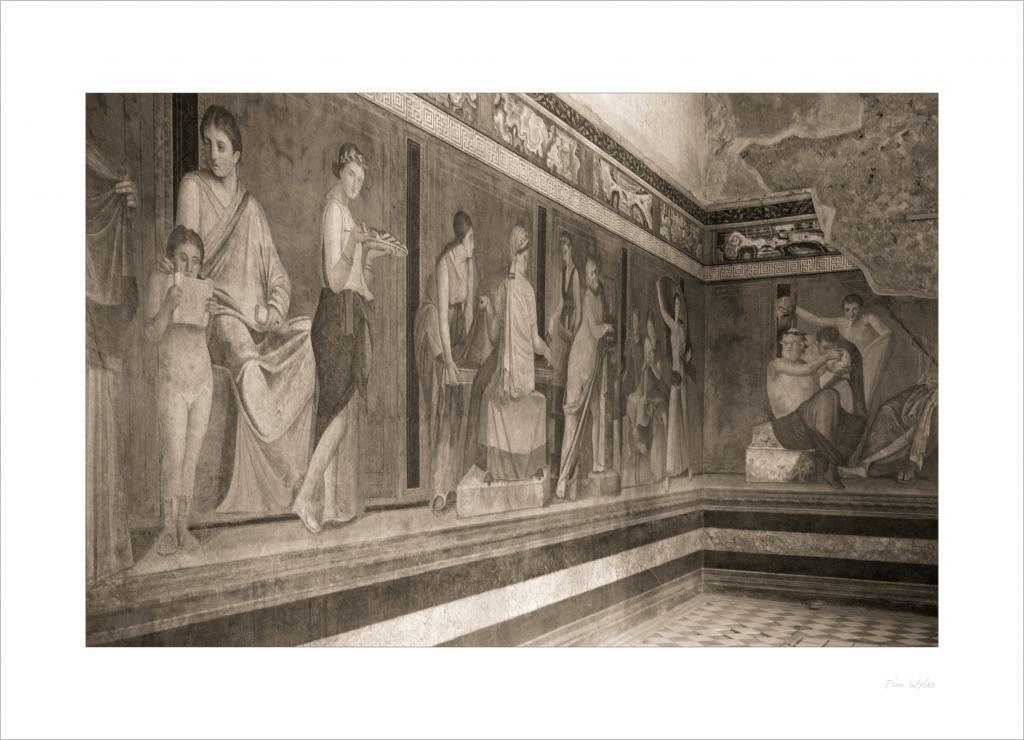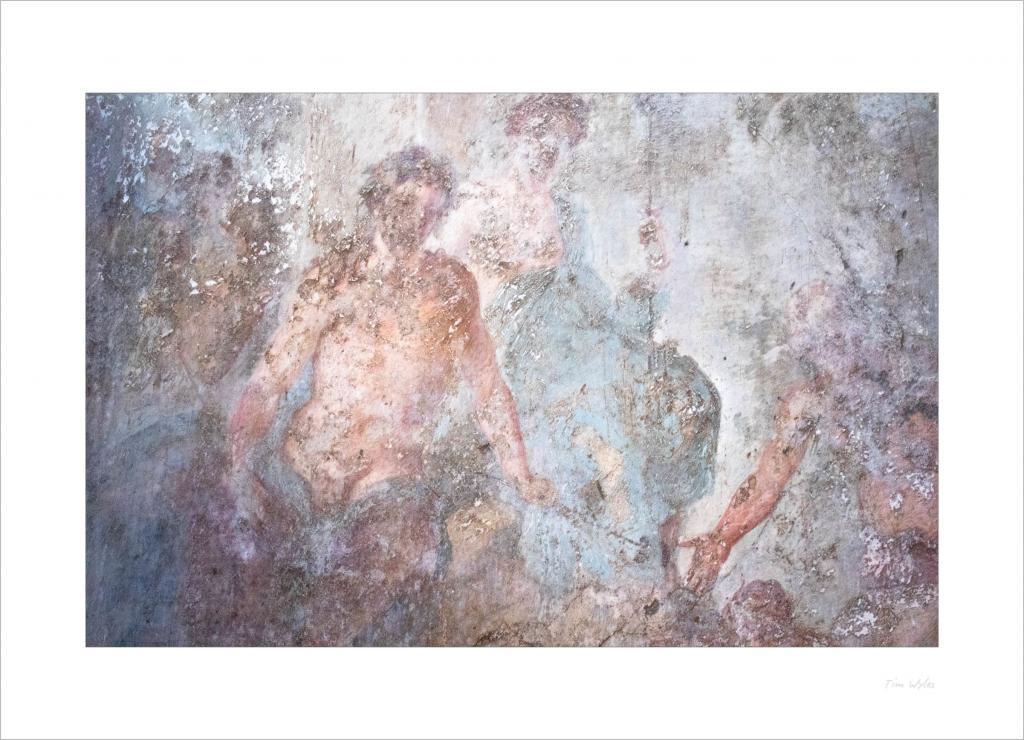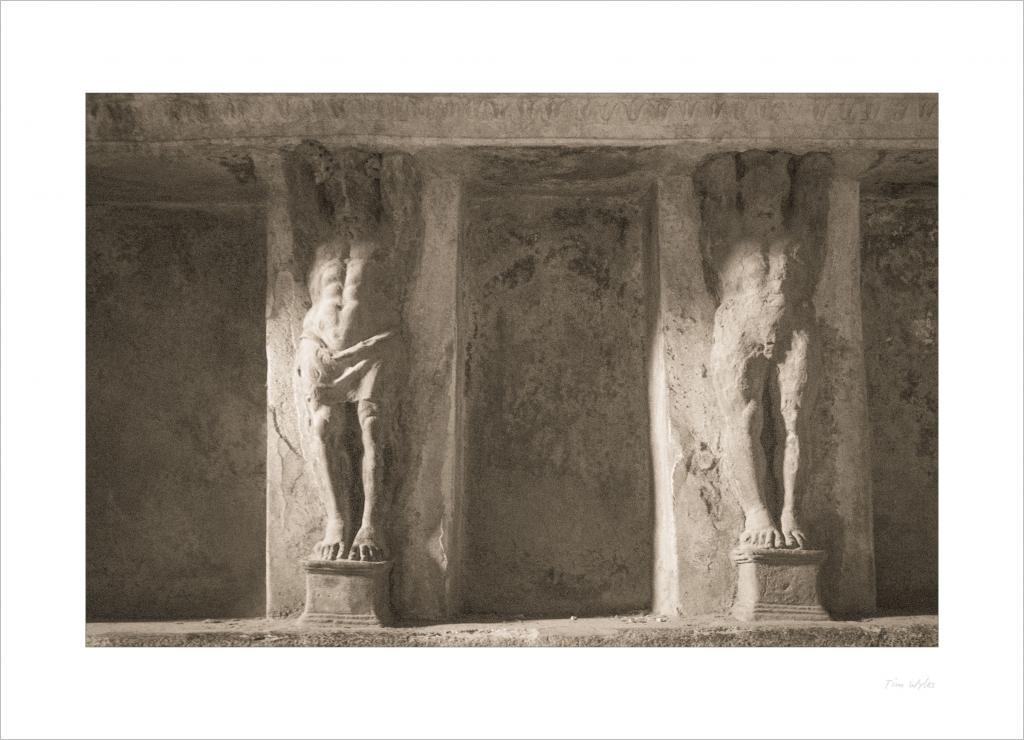Canon M6, 22 mm. ISO 800 & 1600, various speeds @ f/8
For the first time in a long while I revisited some of my old photos today. A couple of months back I had bought a new computer and spent time trawling through some old disks and clearing them down, adding loads of stuff to Lightroom and moving everything onto a nice speedy SSD… Anyway I came across some pictures I had taken back in 2017 on a trip to Italy. I have published some of these previously as Patterns of Pompeii. This time though I found some interior shots. Most of them are too dark or shaky given you can’t use a tripod there and I don’t think I’ve ever bothered looking at them. I was pleasantly surprised to find that some of them scrub up quite well!
I think this is down to firstly to the subjects – they’re old – very old, and therefore have imperfections. Second, the material – it’s stone, so not super smooth with razor sharp edges or exact details – perfect for images with some noise… Finally the location was inside and heavily shaded from the sun, i.e. the light was benerally flat with no areas of high contrast.
The left image is of an amazingly well preserved and colourful Dionysiac frieze in the Villa dei Misteri. I decided to remove the colour using an amazing Palladium Print Lightroom preset from LensWork to try and produce an old book drawing type effect. Whether it does that I don’t know but I like the result and actually prefer it to the gaudy coloured version. I also corrected a converging vertical with Photoshop to straighten the vertical lines in the painting. Tying in with the earlier Patterns of Pompeii, the upper right hand corner of this image shows an example of the underlying brickwork featured in that previous post.
The middle image is from Casa dei Vettii and shows I believe, the fight between Eros and Pan, I have left this as colour as the hues are quite subtle yet varied which really helps define the picture. In monochrome, the image feels rather flat and the detail indiscernible unless the contrast is pushed up, which I think ruins the overall delicacy of the image.
The final image is a bit of a mystery to me as to exactly which building this was in! This was taken on our second visit early in the evening (highly recommended in order to avoid the crowds). Other than being lightened in Lightroom before being subjected to the Palladium Prining preset, the image has had nothing done to it and I think the noise from ISO 1600 really suits it well.


















